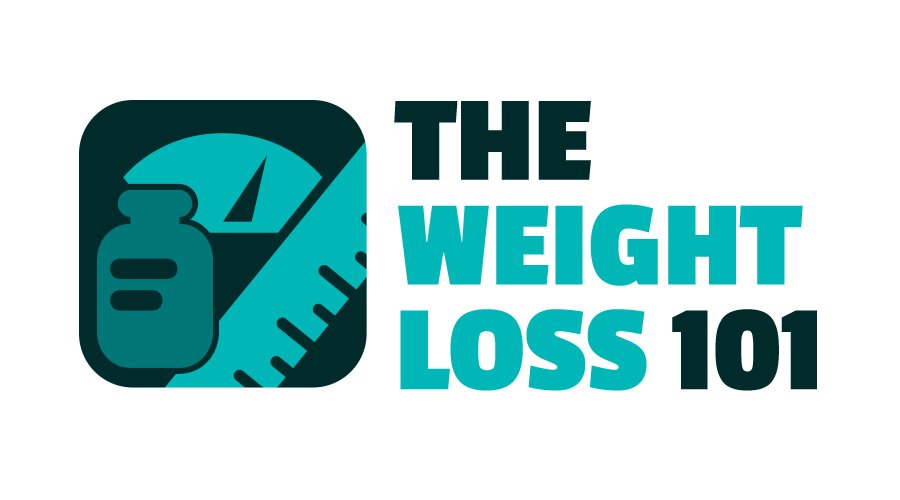The Apple Watch is a popular fitness tracking device that offers a variety of benefits for strength training. While it may not have built-in features specifically for tracking strength workouts, there are ways to utilize the Apple Watch for this type of training. Logging your workouts can help with progress tracking and planning, as well as provide motivation.
The Apple Watch does have “Strength Training” workouts, but they only measure calories, time, and heart rate. Voice Memos and third-party apps like Fitbod, Gymaholic, and Strong offer alternative tracking options.
Key Takeaways:
- The Apple Watch can be used for strength training, despite not having dedicated features for it.
- Logging your workouts helps track progress, plan workouts, and stay motivated.
- Alternative tracking options include using Voice Memos and third-party apps like Fitbod, Gymaholic, and Strong.
- Apple Watch’s “Strength Training” workouts measure calories, time, and heart rate, but not specific strength training metrics.
- Strength training with the Apple Watch can enhance the overall fitness experience and help achieve fitness goals.
Why Log Your Workouts in the First Place?
Logging your strength training workouts can have multiple benefits. When you track your workouts, you can monitor your progress as your muscles grow and get stronger. This provides a visual representation of your journey and can be highly motivating.
In addition to progress tracking, logging your workouts allows for better planning and organization. By keeping a detailed record of your exercises, sets, reps, and weights, you can design more effective workouts that target specific muscle groups and track your performance over time.
A workout log serves as a secondary source of motivation. When you see your previous achievements and the effort you’ve put into each session, you’ll feel a sense of pride and accomplishment. This boosts your confidence and keeps you motivated to continue pushing yourself.
“The key to success is to focus on goals, not obstacles.”
Tracking Your Progress
When you log your workouts, you have a clear record of your progress. You can track the weights you lift, the number of reps you perform, and the sets you complete. This data allows you to see improvements in your strength, endurance, and overall fitness levels. It’s a great way to stay accountable and ensure you’re consistently challenging yourself.
Better Workout Planning
A workout log provides valuable insights into your training routine. By reviewing your past workouts, you can identify patterns, strengths, and weaknesses. This information allows you to make informed decisions when designing future workouts, tailoring them to your specific goals and needs.
Motivation and Positivity
A workout log serves as a visual representation of your dedication and hard work. When you’re feeling unmotivated or tired, flipping through your log can rekindle your drive. It reminds you of the progress you’ve made and the results you’re striving for, boosting your positivity and keeping you on track.
| Benefits of Logging Workouts | Reasons to Log Workouts |
|---|---|
| Track progress as muscles grow and get stronger | Better planning and organization of workouts |
| Stay motivated and positive | Clear record of progress and achievements |
| Identify patterns and make informed workout decisions |
Doesn’t the Apple Watch Already Have “Strength Training” Workouts in WatchOS?

The Apple Watch does offer “Strength Training” workouts in the Workout app, but there are limitations to its tracking capabilities. These workouts primarily measure calories, time, and heart rate, which are important metrics but not specific to strength training.
The Apple Watch’s tracking data does not include detailed information such as reps, sets, and weight, which are crucial for monitoring progress and optimizing strength training routines. Without this level of specificity, it can be challenging to accurately track and analyze the effectiveness of your strength workouts.
In watchOS 7 and newer versions, Apple has introduced additional options for strength training workouts. These include “Functional Strength Training” and “Traditional Strength Training,” which provide more targeted tracking features. However, users with older watchOS versions do not have access to these pre-set modules and must manually add their workouts.
To compensate for the limitations of the Apple Watch’s built-in strength training tracking, users can explore alternative methods to track their workouts effectively. Let’s explore two popular options below:
Option 1: Voice Memos
One way to track your strength training sessions is by using the Voice Memos app on your Apple Watch. While it may not provide immediate real-time tracking, it offers a convenient way to log your workouts without the need for pen and paper.
Simply speak your reps, sets, and weights into the app after completing each exercise. These recordings can be played back later to log your sets and review your past performance. While it requires dedication to consistently track your workouts, it serves as a viable alternative for those looking for a simple and accessible method.
Option 2: Third-Party Apps
Another option is to explore third-party apps that provide comprehensive strength training tracking capabilities. These apps offer features beyond what the Apple Watch alone can provide, allowing you to track various metrics such as reps, sets, weight, calories burned, and heart rate.
Here are three popular third-party apps for tracking strength training with the Apple Watch:
- Fitbod: Ideal for novice lifters, Fitbod offers pre-programmed workouts and integrates with the Health app for seamless tracking and analysis.
- Gymaholic: Recommended for intermediate lifters, Gymaholic provides pre-made workouts and the ability to track lifts, reps, sets, calories, and heart rate.
- Strong: A popular choice for advanced lifters, Strong allows for manual curation of workouts and comprehensive tracking of various metrics.
Explore these apps to find the one that best suits your needs and preferences, as they can enhance your strength training experience with the Apple Watch.
While the Apple Watch’s built-in “Strength Training” workouts serve as a starting point, they have limitations when it comes to specific tracking for strength training. By utilizing voice memos or third-party apps, you can overcome these limitations and gain a more comprehensive understanding of your strength workouts.
The App-Free Solution: Voice Memos
When it comes to tracking your strength training workouts with your Apple Watch, there’s a simple and convenient app-free solution available: Voice Memos. With the Voice Memos app on your Apple Watch, you can easily record and log your performances without the need to manually type sets or statistics. Just speak your totals into the app, and it will capture the data for you.
Using Voice Memos for Apple Watch strength training tracking offers several advantages. Firstly, it eliminates the hassle of writing everything down with pen and paper, providing a more streamlined and efficient approach to workout tracking. Additionally, capturing your workout details through voice recordings allows for hands-free operation, enabling you to focus solely on your training sessions.
After completing your workout, you can play back the recordings to log your sets and review your past performance. This retrospective analysis allows you to assess your progress and identify areas for improvement. While this method of tracking does not provide an immediate point of reference like a digital log, it offers a convenient alternative that doesn’t require additional apps or devices.
“Voice Memos on the Apple Watch has been a game-changer for me in tracking my strength training workouts. It’s so convenient to just speak my totals and have them logged automatically. It saves me a lot of time and effort.” – Sarah C., Apple Watch user
By utilizing Voice Memos, you can easily track your strength training workouts without the need for third-party apps or additional equipment. It’s a simple yet effective solution that leverages the capabilities of your Apple Watch to help you stay on top of your fitness goals.
While Voice Memos provide a practical way to log your workouts, if you’re seeking more advanced features or personalized guidance for your strength training, you may want to explore third-party apps. In the next section, we’ll discuss some popular options that can further enhance your Apple Watch strength training tracking experience.
Need More Guidance? Try Third Party Apps
While the Apple Watch provides basic strength training tracking features, there are third-party apps that offer more comprehensive capabilities. These apps can help you take your strength training to the next level, providing guidance, tracking, and optimization for your workouts.
Fitbod
Fitbod is a popular app for novice lifters who want a personalized strength training experience. It offers a variety of pre-programmed workouts designed to target specific muscle groups and fitness goals. Fitbod also syncs seamlessly with the Health app, allowing you to keep all your fitness data in one place.
Gymaholic
If you’re an intermediate lifter looking for pre-made workouts and advanced tracking capabilities, Gymaholic is the app for you. It offers a wide range of workouts that you can customize to fit your needs, and it allows you to track lifts, reps, sets, calories burned, and heart rate. With Gymaholic, you can closely monitor your progress and make adjustments to maximize your gains.
Strong
For advanced lifters who want complete control over their workouts, Strong is a popular choice. This app allows you to manually curate your own workouts based on your specific goals and preferences. With Strong, you can track various metrics such as reps, sets, weight, and even rest times, giving you a detailed overview of your performance. It’s a powerful tool for those who are serious about strength training.
These third-party apps offer a range of features and options to suit different fitness levels and goals. Whether you’re a beginner or an experienced lifter, incorporating these apps into your strength training routine can provide the guidance and tracking you need to optimize your workouts and reach your fitness goals.
| App | Target Audience | Features |
|---|---|---|
| Fitbod | Novice lifters | Pre-programmed workouts, syncs with Health app |
| Gymaholic | Intermediate lifters | Pre-made workouts, tracks lifts, reps, sets, calories, and heart rate |
| Strong | Advanced lifters | Manual curation of workouts, tracks various metrics |
Apple Watch Strength Training Benefits and Features
Strength training with the Apple Watch offers numerous benefits that can enhance your workouts and help you achieve your fitness goals. The watch comes equipped with useful features for tracking your strength training sessions, providing valuable insights and motivation along the way.
Improved Tracking of Workouts
One of the key benefits of strength training with the Apple Watch is the ability to accurately track your workouts. The watch measures important metrics such as calories burned and heart rate during your strength training sessions, giving you a better understanding of the intensity and effectiveness of each workout.
With the Apple Watch Series 2 and later models, you also have access to built-in GPS, allowing for better distance tracking during your outdoor strength workouts. Whether you’re lifting weights at the gym or doing bodyweight exercises at the park, the Apple Watch can help you keep tabs on your progress.
Motivation and Progress Tracking
In addition to tracking your workouts, the Apple Watch provides features that can boost your motivation and help you track your progress over time. The watch allows you to set goals and receive notifications when you achieve them, keeping you motivated to push harder and reach new milestones.
You can also use the Apple Watch’s Activity app to view detailed summaries of your strength training sessions, including the duration, calories burned, and heart rate data. This visual representation of your progress can serve as a powerful motivator and inspire you to stay consistent with your strength training routine.
Functional Strength Training and Traditional Strength Training
With the introduction of watchOS 7 and newer versions, the Apple Watch offers specific workout modes for Functional Strength Training and Traditional Strength Training. These modes provide even more accurate tracking options for your strength training workouts.
In Functional Strength Training mode, the Apple Watch uses a combination of motion data and heart rate readings to estimate the calories burned and provide you with a comprehensive overview of your workout. Traditional Strength Training mode, on the other hand, focuses on heart rate and duration, offering a simplified tracking experience for your strength training sessions.
By utilizing these modes, you can get a better understanding of your performance and progress during your strength training workouts.
| Apple Watch Strength Training Benefits | Apple Watch Strength Training Features |
|---|---|
|
|
With its comprehensive tracking capabilities and motivating features, the Apple Watch is a valuable tool for anyone looking to incorporate strength training into their fitness routine. Whether you’re a beginner or an advanced lifter, the Apple Watch can provide the support and insights you need to optimize your workouts and reach your strength training goals.
Apple Watch Strength Training Exercises

The Apple Watch is not only a powerful fitness tracker but also a versatile companion for strength training exercises. With its advanced capabilities, you can customize your workouts and track a wide range of exercises to maximize your fitness gains. Whether you prefer weightlifting, bodyweight movements, or resistance training, the Apple Watch has you covered.
During your strength training sessions, the Apple Watch can accurately track vital workout metrics such as reps, sets, weight, and more. This allows you to monitor your progress and make informed decisions to improve your performance over time. With every exercise, the Apple Watch offers a comprehensive analysis of your efforts, helping you stay on track and achieve your fitness goals.
Here are some popular strength training exercises that you can perform with the Apple Watch:
- Bench Press
- Deadlift
- Squats
- Dumbbell Exercises
In addition to these traditional exercises, the Apple Watch also supports other strength-focused activities such as yoga and core training. By tracking your movements, heart rate, and calories burned, the Apple Watch provides valuable insights into your overall strength training performance.
“Strength does not come from the physical capacity. It comes from an indomitable will.” – Mahatma Gandhi
With the Apple Watch, you can unleash the power within you and push yourself to new heights in your strength training journey. Whether you’re a beginner or an experienced lifter, the Apple Watch is a reliable companion to help you achieve your fitness goals.
| Exercise | Reps | Sets | Weight |
|---|---|---|---|
| Bench Press | 10 | 3 | 185 lbs |
| Deadlift | 8 | 4 | 225 lbs |
| Squats | 12 | 3 | 135 lbs |
| Dumbbell Exercises | 12 | 3 | 30 lbs |
These are just a few examples of the exercises you can perform with the Apple Watch. Feel free to explore and experiment with different workouts to challenge your body and achieve the desired results.
Take Your Strength Training to the Next Level
Are you ready to take your strength training to the next level? The Apple Watch is your ultimate fitness companion, providing you with the tools and insights you need to excel in your workouts. With its seamless integration into your fitness routine, the Apple Watch empowers you to track your progress, stay motivated, and unlock your full potential.
Conclusion
In conclusion, the Apple Watch proves to be a valuable tool for strength training enthusiasts. While it may lack specific built-in features for tracking strength workouts, there are various methods to optimize its use in this area. Users can leverage the Voice Memos app to conveniently record their workout performances, allowing for easy tracking and analysis. Additionally, third-party apps like Fitbod, Gymaholic, and Strong provide comprehensive workout tracking options and tailored exercise programs.
By utilizing these tools and features, individuals can effectively track their progress, plan their workouts, and stay motivated throughout their strength training journey. The Apple Watch’s ability to measure metrics such as calories burned and heart rate during strength training sessions provides valuable insights into one’s performance. Furthermore, with the introduction of Functional Strength Training and Traditional Strength Training features in watchOS 7 and newer versions, users can enjoy more specific tracking options.
Whether performing weightlifting exercises, bodyweight movements, or resistance training, the Apple Watch can effectively track reps, sets, weight, and other essential metrics. Its versatility extends to a wide range of strength-focused activities, including yoga and core training. With the right approach and tools, the Apple Watch can greatly enhance the strength training experience and help individuals achieve their fitness goals.




